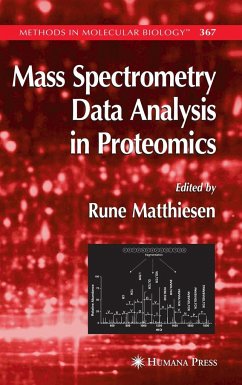
Protocols for Gene Analysis

PAYBACK Punkte
79 °P sammeln!
It is now twenty years since Cohen and Boyer's first steps into DNA cloning. In the time since then, there has been an ever increasing acc- eration in the development and application of the cloning methodology. With the recent development of the polymerase chain reaction, a second generation of the technology has been born, enabling the isolation of DNA (and in particular, genes) with little more information than the p- tial knowledge of the sequence. In fact, DNA sequencing is now so advanced that it can almost be carried out on the industrial scale. As a consequence of these advances, it now...
It is now twenty years since Cohen and Boyer's first steps into DNA cloning. In the time since then, there has been an ever increasing acc- eration in the development and application of the cloning methodology. With the recent development of the polymerase chain reaction, a second generation of the technology has been born, enabling the isolation of DNA (and in particular, genes) with little more information than the p- tial knowledge of the sequence. In fact, DNA sequencing is now so advanced that it can almost be carried out on the industrial scale. As a consequence of these advances, it now appears feasible to sequence whole genomes, including one the size of the human. What are we going to do with this information? The future of basic molecular biology must lie in the ability to analyze DNA (and especially the genes within it) starting at the DNA level. It is for these problems that Protocols for Gene Analysis attempts to offer solutions. So you have a piece of DNA, possibly a gene--what do you do next? The first section of this book contains a number of "basic" te- niques that are required for further manipulation of the DNA. This s- tion is not intended to be a comprehensive collection of methods, but merely to serve as an up-to-date set of techniques. I refer you to other volumes in the Methods Molecular Biology series for further rec- binant DNA techniques.












